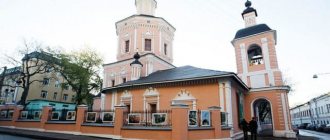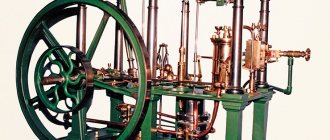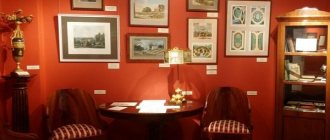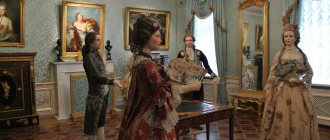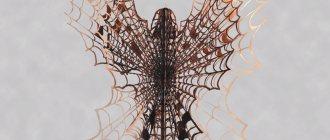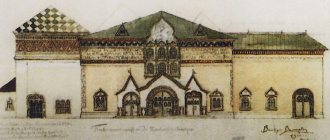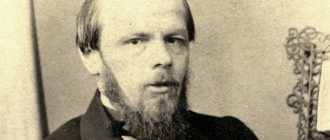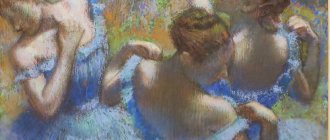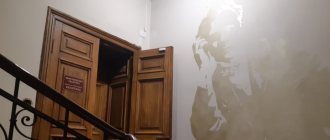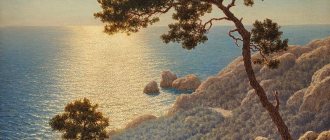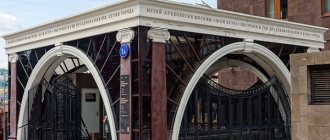Horses run in circles
Of course, in the horse breeding museum there are no real horses that could gallop around in a circle. But when you get here, it seems that the horses everywhere are about to come to life and happily run out into the wild. This is not surprising. After all, the magnificent animals depicted on exhibits look exactly like life.
Horses are everywhere in the museum. The richest fund of the institution includes:
- photographs (about 55 thousand);
- videos (over 30 pieces),
- magazines, books and other works of art in different languages dedicated to horse breeding (more than 12 thousand, among which there are both tomes published in the 16th–18th centuries, as well as recent issues of domestic and foreign periodicals);
- postcards, envelopes and postage stamps;
- collection of bells;
- badges and other souvenirs with images of horses;
- original paintings, graphics and sculptures by Russian and foreign artists (approximately 3.5 thousand).
Among the original paintings, graphics and sculptures are many works by outstanding masters - Vrubel, Serov, Surikov, Grekov, Klodt, Avilov, Kovalevsky, Maine, Polenov, Frenz and others.
Horse Breeding Museum
The Museum of Horse Breeding is the largest permanent exhibition of paintings, photographs, books and sculptures on the topic of horse breeding not only in the Russian Federation, but throughout the world. Indeed, it is difficult to imagine that somewhere there is a fund that would contain more than 3.5 thousand paintings, about 55 thousand photographs and more than 12 thousand magazines, books and other works of art dedicated exclusively to horse breeding.
Story
The founder of the museum is horse breeder Ya.I. Butovich. At the beginning of the twentieth century, he collected the best examples of “horse portrait” and “equestrian genre” in his estate, located in the Tula province. Regardless of material costs, he bought drawings, paintings, portraits and sculptures with images of horses everywhere.
In 1917, on the estate of Yakov Ivanovich, the “Horse Breeding Gallery” was formed - a real art collection, which was actively replenished in the post-revolutionary period.
In 1928, Butovich's collection, numbering 1,200 exhibits, was moved to Moscow, where in January 1929 it became the basis of the funds of the State Museum of Horse Breeding and Horse Breeding at the Moscow Hippodrome.
Since 1940, the Timiryazev Agricultural Academy became the new owner of the Museum of Horse Breeding.
Museum funds
The art collections contain more than 3.5 thousand paintings, works of sculpture, graphics and applied art. The museum’s collection is also supplemented by the largest video and photo library (about 55 thousand negatives), extensive thematic collections of postage stamps, envelopes and postcards, all kinds of souvenirs and badges. In addition, the Museum’s library contains more than 12 thousand magazines and books on horse breeding.
Exposition
Most of the exhibits in the museum are original works of famous Russian painters, sculptors and graphic artists. The authors of individual works were such eminent masters as S. Vrubel, V. Vereshchagin, V. Polenov and V. Surikov.
However, the bulk of the collection consists of works by those artists for whom horses were constant subjects of depiction. The museum contains works by such domestic battle painters and animal painters as B. Billewalde, P. Kovalevsky, P. Gruzinsky, A. Kivshenko, A. Orlovsky, E. Lansere, P. Sokolova, M. Avilov, P. Klodt, T. Gaponenko , M. Grekov, N. Samokish et al.
A special place in the exhibition is occupied by the works of the founder of the domestic animalistic movement N. Sverchkov. Today, the museum displays about 450 of his works - paintings, drawings, watercolors and lithographs.
History of creation
The scientific and artistic complex dedicated to horse breeding began operating at the very end of the 1920s. It opened in the former Imperial Racing Society, which operated at the Moscow hippodrome. The core of the fund was the collection of Ya. I. Butovich, the largest horse expert and head of a stud farm who worked in the Tula region.
Shortly before the Great Patriotic War, the museum was transferred to the Agricultural Academy. Timiryazev. And the institution has become an indispensable part of the educational and educational process. At the end of 1940, under the leadership of the famous Russian hippologist V.O. Witt, a permanent exhibition was created. It continues to this day, being replenished with new materials as necessary.
The exhibits introduce the history of horse breeding, various breeds and types of horses, record holders of riding, trotting and draft breeds, outstanding champions and producers. The museum regularly participates in international exhibitions. The most interesting and significant samples from his collections were exported to Paris, Helsinki and Leipzig.
Description of the organization
“Museum of Horse Breeding RSAU-MSHA named after.
K.A. Timiryazev" is located in Moscow at Timiryazevskaya, 44, 1st floor. The establishment is located in the Timiryazevsky district. You can get here by your own car, search coordinates on the map are 55.8307, 37.5529. It is also possible to take the metro (the nearest station is Petrovsko-Razumovskaya), from which you can go to the Museum of Horse Breeding of the Russian State Agrarian University-Moscow Agricultural Academy named after. K.A. Timiryazev" is only 1600 meters. You can preliminary assess the situation using 1 photo. This establishment is included in category 1. You can get more information by using the phone or website. At the Museum of Horse Breeding of the Russian State Agrarian University-Moscow Agricultural Academy named after. K.A. Timiryazev's address and telephone number or the company's opening hours are indicated with an error? Write to us!
Relevant news
- The governor of the Moscow region took part in the “Night of Museums” event
Governor of the Moscow region Andrei Vorobyov visited the museum and exhibition complex “New Jerusalem” in Istra as part of the “Night” campaign museums" TV channel 360 reports this. He toured a unique exhibition of 15th-century German engravings, “The Age of Dürer,” and a number of permanent exhibitions, including one about the history of “New Jerusalem.” “The Age of Durer” is in Moscow for the last time...
- Russia
Regions
20 May 2021, 03:26
Guide of the French State Museum
, dedicated to the work of the artist Etienne Terrus, discovered that more than half of the paintings on display in the establishment were fakes. The Telegraph writes about this. The first fake was found when an art critic working on a new exhibition noticed buildings in one of the landscape paintings that were built after...
- Culture
Art
April 28, 2021, 11:56 pm
...Russian Culture Vladimir Medinsky and Turkish Minister of Culture and Tourism Numan Kurtulmus. The Russian delegation included representatives of the Tretyakov Gallery and the Historical Museum
, Russian National
Museum
of Music, All-Russian
Museum
of Decorative, Applied and Folk Arts, Soyuzmultfilm studio and other cultural institutions. "We…
- Cultural enlightenment
Tourism
28 April 2021, 15:28
Operating mode
The Museum of Horse Breeding is located on Timiryazevskaya Street, 44, 1st floor. The nearest metro station is Petrovsko-Razumovskaya. For individual visits, the scientific and artistic institution is open on Tuesdays and Thursdays from 10:00 to 16:00. Free admission.
Nonresident visitors can rent a room in one of the mini-hotels closest to the museum. After viewing the exhibition, it will be great to stroll along the surrounding streets or sit in a cafe. From the museum building you can also go to other Moscow attractions.
History of the museum.“Dear friend, let’s indulge in the running of an impatient horse...” - these words of the poet are involuntarily remembered in the halls of the Museum of Horse Breeding. And not by chance. The thematic art collection housed here has no equal in the world.
To bring together the best examples of the “equestrian genre” and “horse portrait” - this was the task that horse breeder Ya.I. set himself at the beginning of this century. Butovich. Regardless of costs, he bought paintings, drawings, sculptures, and ordered portraits of trotters from his stud farm. By 1917, the Prilepa estate in the Tula province already had a real art collection - the “Horse Breeding Gallery,” as its owner called it. The collection expanded significantly in the first post-revolutionary decade, when Butovich remained in Prilepy as the director of the state-owned stud farm and gallery.
All the wealth collected by Butovich is almost 1200 exhibits,
was transported to Moscow in 1928 and became the basis of the funds of the State Scientific and Art Museum of Horse Breeding and Horse Breeding, opened at the Moscow Hippodrome on January 23, 1929. The founder of the museum was first briefly arrested and then expelled from the capital. Living in Vyazma, and later in Shchigra, he compiled a detailed description of the collection and wrote memoirs containing a lot of interesting information. Ya.I. died Butovich fell into extreme poverty in 1937 or 1938, the exact date of his death is unknown. In 1940, the museum was transferred to the Timiryazev Academy.
Museum funds.
The art collections include more than 3,500 paintings, works of graphics, sculpture and applied art. Supplemented by the largest photo library (over 55,000 negatives), a video library, extensive thematic collections of postage stamps, postcards and envelopes, badges, and all kinds of souvenirs, they recreate in visual images the history and current state of domestic horse breeding. The museum's library contains over 12,000 books and magazines on horse breeding, from unique volumes of the 16th-18th centuries to modern Russian and foreign publications.
Exposition.
The vast majority of the museum's exhibits are original works of famous, mainly Russian painters, graphic artists and sculptors. Some of the greatest masters are represented in individual works: Serov, Vrubel, Polenov, Vereshchagin, Surikov. However, the bulk of the collection consists of works by those artists for whom the horse was not an accidental, but a permanent object of image. The museum presents the work of many domestic anamalists and battle painters B.P. Billewald, P.N. Gruzinsky, A.D. Kivshenko, P.O. Kovalevsky, A.P. Orlovsky, P.P. Sokolova, P.K. Klodt, E.A. Lanceray, M.A. Avilova, T.P. Gaponenko, M.B. Grekova, N.S. Samokish and others. Of particular interest are the works of the founder of the animalistic movement in Russian art N.E. Sverchkova (1817 - 1898). The museum contains about 450 of his paintings, watercolors, drawings and lithographs.
Working with students.
Being one of the divisions of the Timiryazev Academy, the museum is primarily called upon to participate in the training and aesthetic education of students. Here they conduct scheduled classes, excursions and consultations for students of animal engineering and other faculties of the academy, as well as for students of other higher educational institutions and students of technical colleges and schools. The museum is open to everyone; every year it is visited by thousands of Muscovites and guests of the capital in all parts of Russia, many countries near and far abroad. The museum staff conducts active scientific and bibliographic work. Students, graduate students and researchers widely use the index “Literature on horse biology, horse breeding and equestrian sport” compiled by the museum team, which covers all publications from 1917 to the present.
Exhibition activities.
The museum's rich funds allow it to constantly participate in art exhibitions. In recent years alone, its exhibits have been presented at exhibitions in Moscow, St. Petersburg, Kyiv, Paris, Leipzig, and Helsinki. More than 150 thousand Americans viewed a representative exhibition of paintings and sculptures from the collections of the Museum of Horse Breeding, which was shown for a year and a half in two US museums. Museum staff have successfully performed abroad at symposiums devoted to various issues of horse breeding.
Museum address: 127550 Moscow, st. Timiryazevskaya, 44 Phone: 976-10 - 03
The museum is open on weekdays from 10 a.m. to 5 p.m., on Fridays until 4 p.m. Admission is free from 10 a.m. to 4 p.m., on Fridays until 3 p.m. Excursions are available upon prior request.
For questions and suggestions regarding the operation of this server, please contact:
DEOLНomePage
How to get there
The Museum of Nomadic Cultures will not be so easy to find for a person going there for the first time. It is located at st. Aviamotornaya, 30a, in the courtyard of school No. 1321 “Ark”.
You can get to the museum in different ways:
- By car. Exit onto Entuziastov Highway and from it turn onto Aviamotornaya Street, then turn towards the school near house No. 28/6.
- By taxi. The most popular services in Moscow are Gett Taxi, Yandex Taxi and Uber.
- By bus. The nearest stop is Aviamotornaya 30. You can get here by buses No. M8, 59, 440, 759 and 859.
- Metro. You need to get to the Aviamotornaya station and exit the subway towards the Palace of Wrestling named after. Yarygina. Next, moving along Avtomotornaya Street, you should reach house No. 28/6 (the Magnolia store is located there), and then turn right and walk to a four-story school building. The museum is located behind it.
Moscow metro map
